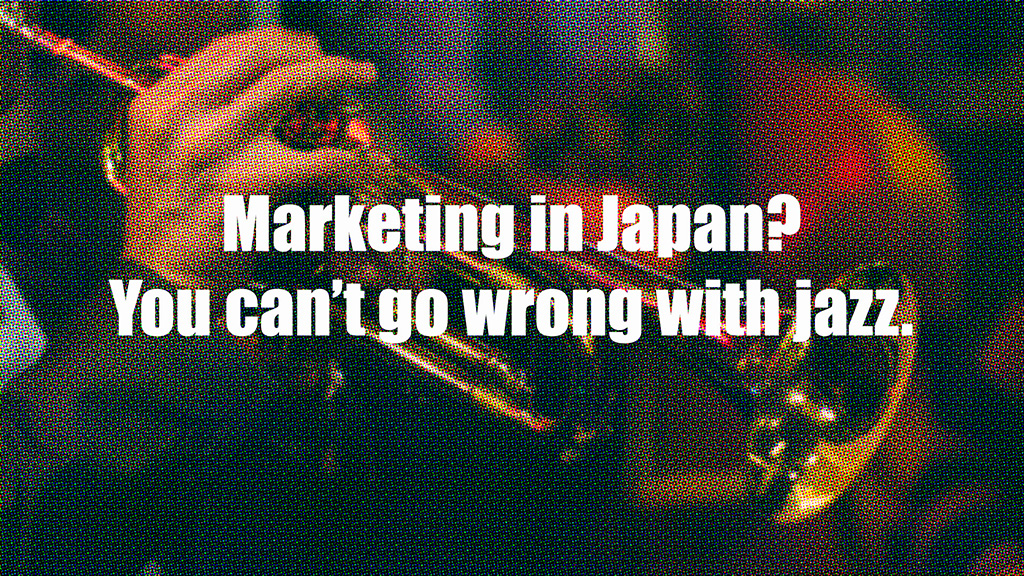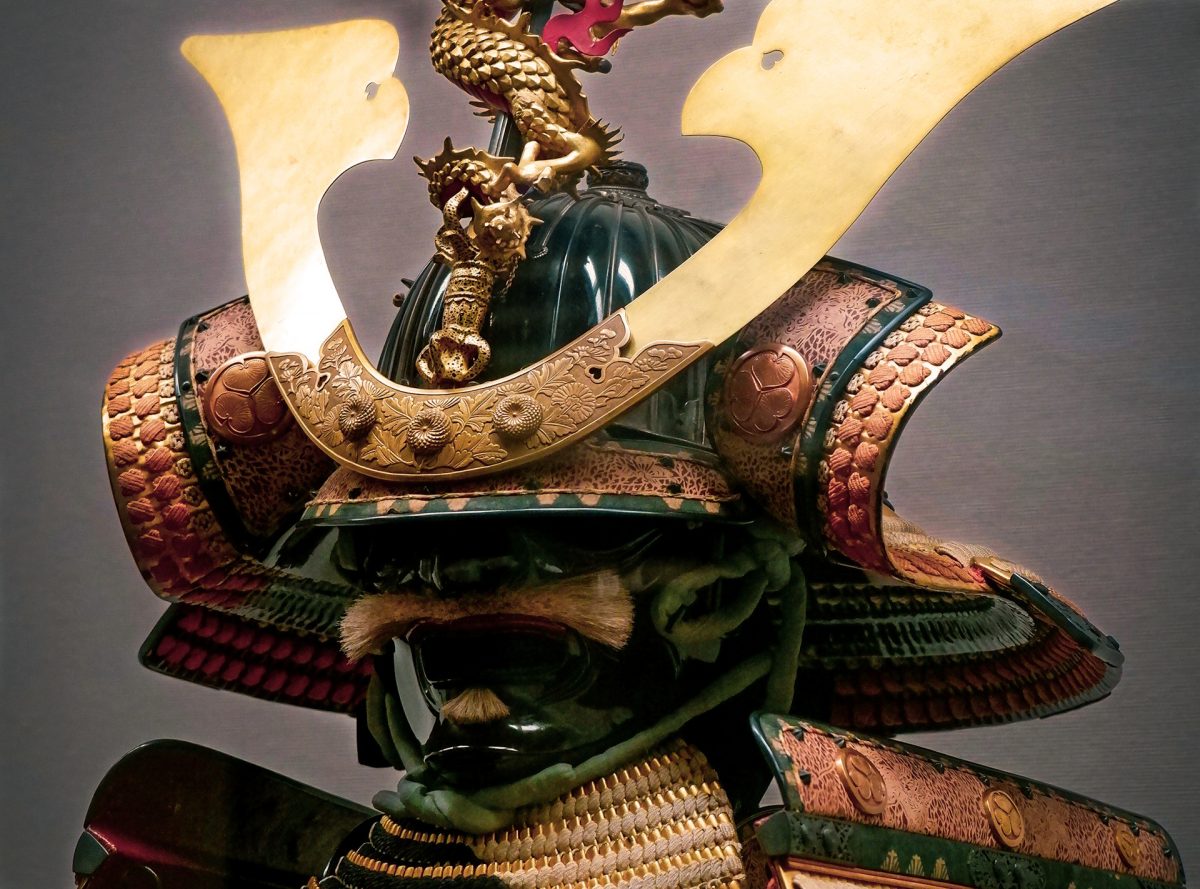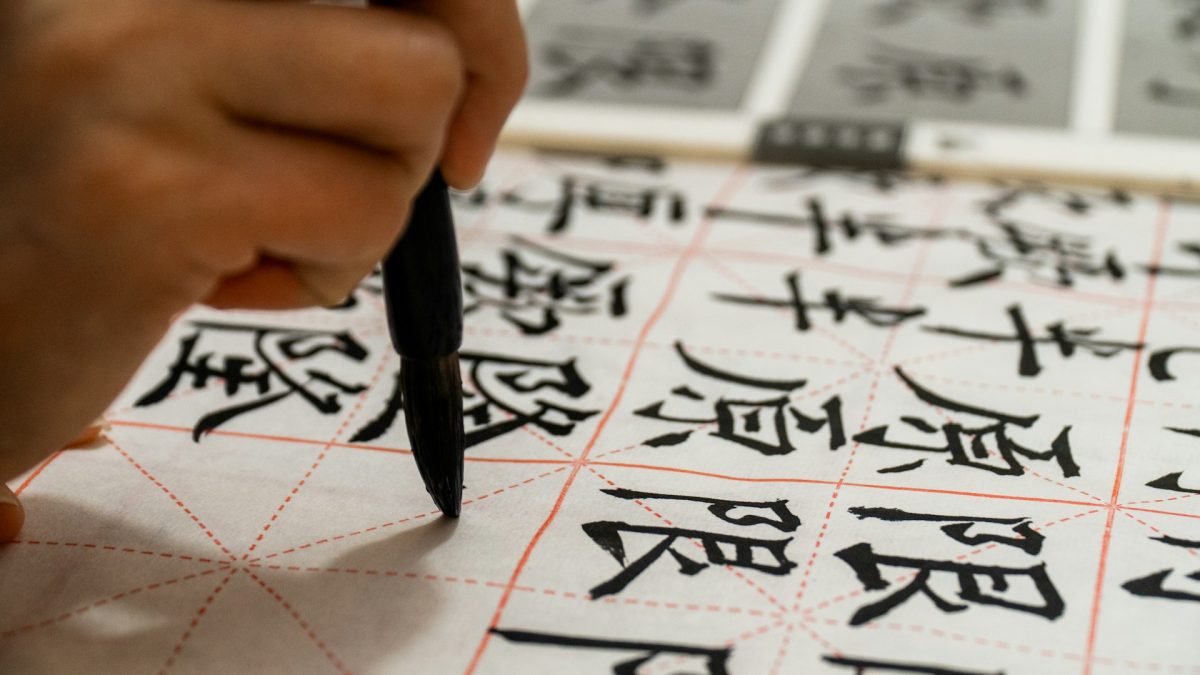
(*Linked or embedded videos may have been removed or be unavailable.)
If you’re thinking of entering a foreign market, you obviously need to localize your content into the local language. But while you’re thinking about your marketing localization strategy, also consider the sound that best suits your brand image. In Japan, maybe more than in many other countries, jazz can be the sound that resonates most effectively with your target audience.
Although jazz was born in the US about a century ago and had enormous impact on the music that followed, it’s also true that jazz, along with classical, has become one of the least-popular musical genres in America (accounting for 1.1% and 1.0% respectively in total sales volume). Let’s face it, jazz is a niche genre in today’s music scene. But niche or not, it remains much more relevant in some markets overseas than back in the States.
Pan eastward to Japan, the second-largest music market in the world, surpassed only by the US. The MRC Data Year-End Report 2020 reported that among music listeners in Japan, 48% of them listened to jazz, and 11% were “jazz fans” who listened often. In addition to three locations in the US (New York, Waikiki, Napa), Blue Note maintains five jazz clubs overseas—two of which are in Japan (Tokyo and Nagoya), plus one each in China (Beijing), Italy (Milan), and Brazil (São Paulo). Nearly half of all overseas locations are in Japan, and Japanese fans make up a very large proportion of the clientele at US locations as well. And after COVID put a damper on live jazz events everywhere, from gigs to festivals, they are returning to Japan nationwide with events like Sapporo City Jazz.
So let’s take a look at what makes Japan all that jazzy.
Japan’s history with Jazz
Jazz, much like baseball, was introduced to Japan in the pre-war era, got banned, and then came roaring back with a vengeance. The first jazz boom happened when unemployed Japanese musicians found work playing jazz and rockabilly tunes on US military bases in their country. Those musicians, in turn, helped to forge a new era in Japanese music. By the end of the 1950s, Japanese jazz musicians like pianists Toshiko Akiyoshi, Yosuke Yamashita and Masahiko Satoh had gained notoriety, with some oddball exceptions like the jazz band Crazy Cats entering the fields of comedy and acting. Each successive decade would produce its own crop of locally grown jazz musicians to keep the genre relevant.
Jazz in J-marketing
Japan has a wide selection of music to supply catchy tracks for their TV commercials. In addition to western R&B and pop tunes with global reach, there are domestic powerhouses like J-pop, J-rock, kayōkyoku, enka and anime music vying for attention. But depending on your product, service, and target demographic, jazz can be an ideal vehicle for brand development and sales promotion.
Over the years, jazz standards have provided the sound to sell by, such as “Take Five” and “Work Song” for energy drinks, “L-O-V-E” for coffee, “Night and Day” and “All of Me” for cigarettes, “Stardust,” “In the Mood” and “Moonlight Serenade” for cars, “Take the A Train” for canned tuna, “Spain” for bottled green tea, “Brazil” and “Somewhere Over the Rainbow” for beer, “As Time Goes By” for photo film, and so on. Some of the song choices seem to make logical sense while others are a bit more challenging and amusing.
Aside from using jazz standards as background music, beverage maker Suntory enlisted big names like Herbie Hancock, Ron Carter, Branford Marsalis, Bob James, Steve Gadd, Richard Tee, Cornell Dupree, and Eddie Gomez to appear in their whisky commercials, while Mercian landed a rare deal with Miles Davis for their VAN brand of shochu liquor. During the late 1970s to 80s, a slew of home-grown artists such as trumpeter Terumasa Hino, solo guitarists Kazumi Watanabe and Masayoshi Takanaka, as well as fusion bands like Casiopea and T-Square, also contributed to the “marketing sound” of this era. Did you know that even Oscar-winning composer Ryuichi Sakamoto was part of a fusion jazz unit called KYLYN back then?
If you traveled back in time, chances are you’d be hearing a lot of the Mario-like mustachioed saxophonist Sadao Watanabe, who started out playing in Akiyoshi’s band but by now had become a well-known figure himself. His was a familiar face on TV as he appeared in commercials for Coca Cola, Nissan, Yamaha, Citizen, Shiseido, and Kirin, just to name a few.
Even recently, jazz still plays a part in branding and advertising in Japan. Suntory enlisted heartthrob actor Takeru Satoh to introduce their “Chita” whisky to the backdrop of a jazzy remake of the Galaxy Express 999 theme song, a popular anime series in the 1980s. So is it sheer coincidence that they chose a tune that was dear to people who lived through a jazz resurgence as kids and are now of drinking age? Probably more like savvy marketing. Not to be outdone, rival KIRIN got the famous “fish authority” Sakana-kun to play the baritone sax to Tokyo Ska Paradise Orchestra’s “Paradise Has No Border” for their Hyoketsu canned cocktails.
Collaboration and constant reminders
Once every few years, Japan puts out a feature film showcasing the genre of jazz. They’re not about the jazz greats, the way “Bird” depicted the life of Charlie Parker, but rather involve the way Japanese youngsters “discover” the genre and make it part of their lives. Like the teen comedy movie “Swing Girls” (2004) that follows the plight of a group of inept high school girls who wind up forming a big band.
2018 saw the premiere of “Kids On The Slope” or 坂道のアポロン, a feature film based on the anime (2012) and manga series (2007-2012) of the same name, written by Yuki Kodama. Set in 1966 in the city of Sasebo, it follows an introverted high school student who plays classical piano but discovers jazz through his friendship with a delinquent classmate.
Then 2023 comes rolling around with the animated film “Blue Giant” based on the Japanese jazz-themed manga series written and illustrated by Shinichi Ishizuka. Here again, the main characters are high school students that become interested in jazz—this time based in modern-day Sendai, with young hearts set on playing at Tokyo’s (fictional) famous jazz club “So Blue” and changing the jazz scene in Japan, but then something unexpected happens… You’ll have to read the manga or watch the movie for the rest. But here’s a recently released performance scene from the movie. It’s smokin’.
These are just some examples of how the Japanese artforms of manga and anime combine to keep jazz in the hearts and souls of Japan’s next generation. Youngsters like these members of the Kindai University High School Wind Orchestra at the annual Symphonic Jazz & Pops Contest, with their groovin’ rendition of “A Night in Tunisia.” Granted that this is not improvisational jazz, as each note is played per score, but the band does play exceptionally well, and just to remind you: These are highschoolers!
On TV, the 2022 hit series 初恋の悪魔 (Dance With The Devil), a murder-mystery-comedy, featured an opening theme by the jazz unit SOIL&”PIMP” SESSIONS. In this version used during the latter half of the season, they’re joined by rap unit RHYMESTER for a three-way collaboration between TV entertainment and the musical genres of jazz and rap.
Those of you who prefer a more straight-up jazz version can catch it here.
Japan loves jazz and jazz loves Japan right back
Sorry, there isn’t a whole lot of text in this blog post, because I’m trying to provide as many examples as possible through video content. A picture is worth a thousand words, or perhaps even more, like in this one where jazz saxophonist Patrick Bartley and bassist Adam Neely talk about how Japanese pop music has been influenced by jazz (which perhaps contributes to why jazziness continues to linger on without going extinct in that country). And ironically, because jazz-influenced Japanese music, mainly in the form of videogame soundtracks, made their way into the American mainstream, the cultural co-influence continues to reverberate.
Music speaks to us in a way that words often fail to. Remember, there’s more to localization than translating text from the source language into the target language. Appealing to the market in a manner that respects culture and reflects local interests and concerns is an important part of becoming a trusted brand with true staying power. If jazz helps, too, we can dig it.
Douglass McGowan






